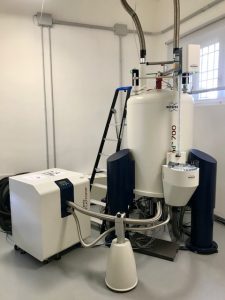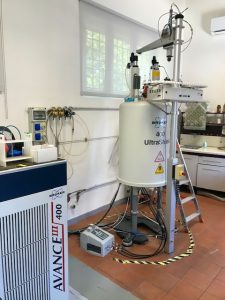Teresa Recca
tel. 0382987549 teresa.recca@unipv.it
NMR stands for nuclear magnetic resonance. It is a spectroscopic technique based on the observation of nuclei in a strong magnetic field, excited by a radiofrequency pulse. The response by the nuclei allows to achieve important informations on structural and dynamical properties of the sample. This is the reason why NMR is widely applied in several fields. NMR applications:Reaction monitoring: understand and optimize chemical reactions in real time and in a non-destructive way, Pharma: 1H and multinuclear (e.g. 13C, 31P, 15N) are essential tools for structural elucidation and drug discovery Biochemistry: structural characterisation of peptides and proteins, dynamics of folding and misfolding, analysis of metabolic products in biofluids Materials research: characterize polymeric products, including determine the presence of isomers and stereoisomers Food: the quantitative nature of NMR can provide important information about speciation or adulteration.
Equipment
 Bruker Avance NEO 700MHz, equipped with a triple resonance helium cooled cryoprobe 5mm, automatic sample changer, Topspin 4.0.7
Bruker Avance NEO 700MHz, equipped with a triple resonance helium cooled cryoprobe 5mm, automatic sample changer, Topspin 4.0.7
 Bruker Avance III 400MHz, equipped with Z-gradient, automatic tuning and shimming, probe BBO 5mm and BBI 5mm, auto sampler, Topspin 3.6.1
Bruker Avance III 400MHz, equipped with Z-gradient, automatic tuning and shimming, probe BBO 5mm and BBI 5mm, auto sampler, Topspin 3.6.1
